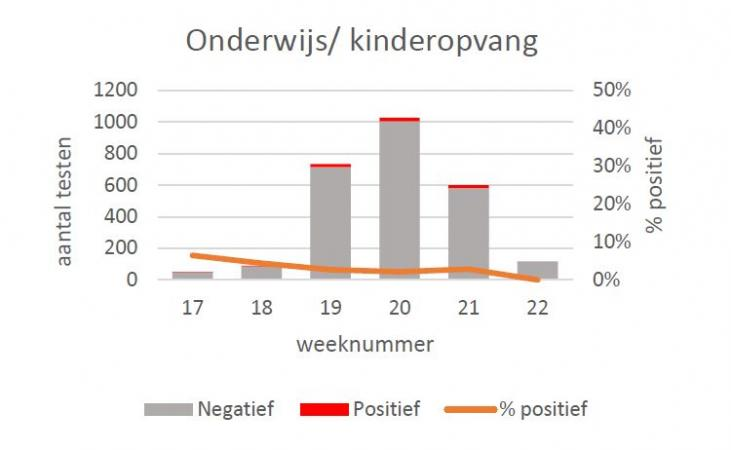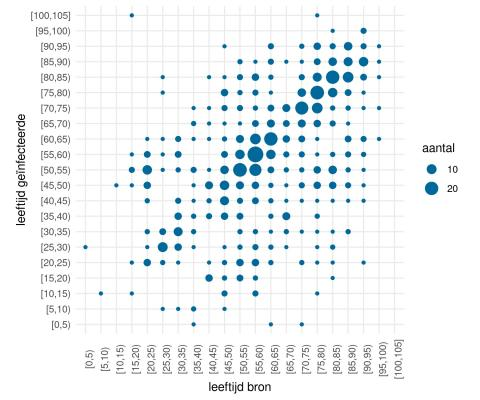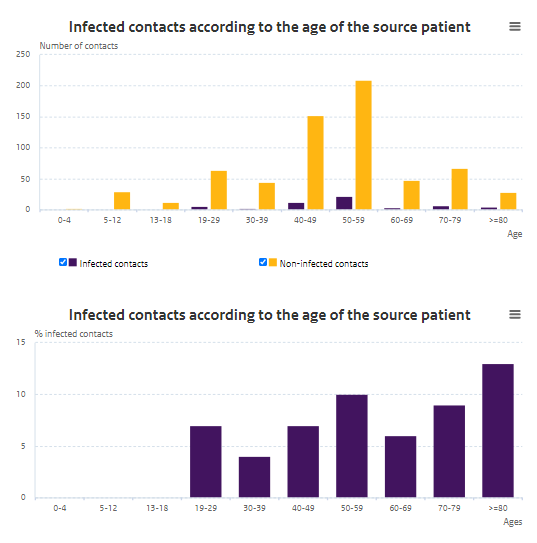Netherlands: "Based on reports from municipal public health services (GGDs), children aged 0-17 years only represent 1.3% of all reported patients with COVID-19, although they comprise 20.7% of the population."
"Since 1 June 2020, all Dutch people with (mild) symptoms can be tested for the coronavirus. Data from the GGD test lanes show that more than 16,500 tests were administered to children up to 12 years of age between 1 and 25 June; 0.3% of those tests were positive. "
"More than 4,800 tests were administered to children between the ages of 13 and 18 years, and 1.4% were positive."
"In the same period, nearly 14,000 people working in education or childcare were tested. 0.5% of these employees tested positive. This percentage is lower than the total of 1.3% of all people tested in the test lanes in the same period."
"COVID-19 is primarily spread between people who are about the same age. The figure below shows data on 693 paired patients, displaying the ages of both the source patient and the patient that they infected."
"Based on source and contact tracing, we see the following: looking at 10 COVID-19 patients who were <18 years old, they had 43 close contacts, and none of them became ill, whereas 8.3% (55/566) of the close contacts of the 221 patients who were ≥18 years old became ill."
"In clusters of patients, adults are almost always the source patient."
"After reopening the primary schools and childcare facilities, a few reports have come in regarding infections among employees at schools; RIVM has not received any reports of employees who were infected by children (based on data as of early June 2020)."
"Denmark was the first country to reopen childcare and primary education, as of 15 April. They have not reported any negative effects after reopening the schools and are not seeing any increase in the reproduction number."
"A study from Australia showed that there had been confirmed cases of COVID-19 in 9 children and 9 employees. 735 children and 128 employees had been in close contact with these patients...
... Two other children may possibly have been infected by one of these 18 patients. No other teacher or staff member contracted COVID-19."
"Since children play a minor role in the spread of the virus, the 1.5 metre measure is less strict for young children amongst themselves. That means that children can go to school and play outside."
"Young people aged 13 until 18 years old (i.e. 17 years old and younger) do not have to stay 1.5 metre apart from each other. In secondary schools, this applies to all pupils, regardless of their age."
"In secondary vocational education (MBO) and higher education, all students should stay 1.5 metre apart, regardless of their age. Since adults play a greater role in the spread of the novel coronavirus, teachers need to stay 1.5 metre apart from others as often as possible."
"Children with underlying health conditions do not seem to run a greater risk of a severe course of COVID-19 than healthy children, with the possible exception of children with severe obesity and or diabetes."

 Read on Twitter
Read on Twitter




